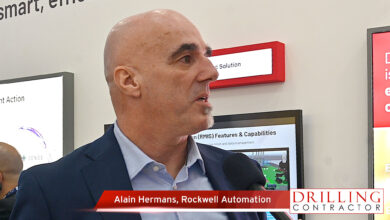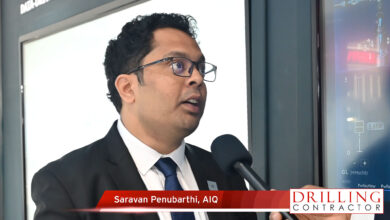Automation, robotics and sustainability shaping visions for rig of the future
While no newbuild cycle is on the horizon, hardware and software advances offer clues to how future rig designs, functions will evolve
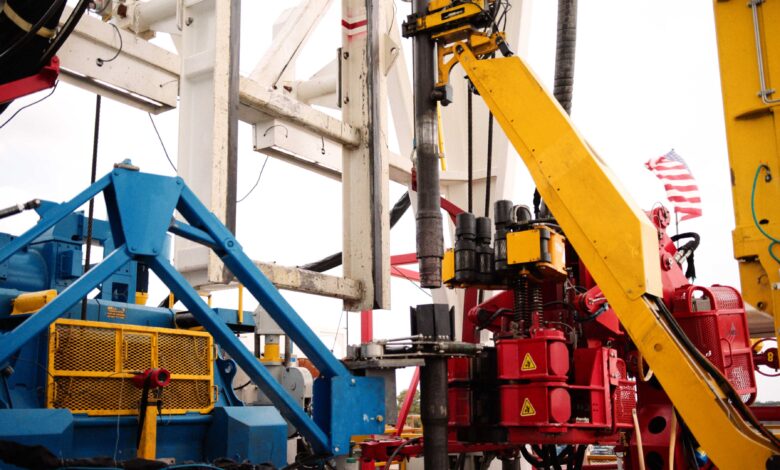
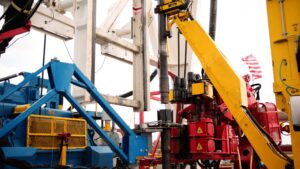
By Stephen Whitfield, Senior Editor
What, exactly, is the rig of the future? The nature of the oil and gas industry is to look ahead, but not too far ahead. Drilling contractors and operators often work on small enough margins to where wishcasting about hypothetical rigs that will run years from now seems little more than a fool’s errand. The biggest things drilling contractors and operators traditionally look for out of a rig are how it can drill wells faster, more efficiently and at lower cost compared with other rigs on the market. That focus will not change in the future.
However, for some in the industry, the demands of the future have them thinking about how rigs will change to accommodate new realities.
For instance, the combined application of cloud computing systems and data analysis software is improving how drilling data is collected and monitored, and automation and robotics packages are utilizing that data to make decisions and perform tasks on the rig without the need for human intervention. As these systems become more commonly used tools in the driller’s toolbox, the ability to process information – and the need for people to physically act on that information on the rig – will change.
“When we’re looking at technology, all we’re trying to do is get more information to the user,” said Matt Givens, Domain Expert – Pressure Control Equipment, SLB. “Whether that information is on the edge at the well site and they’re getting it there, or whether we’re connecting that data back to town, if we can get that data back, it’s going to help people start making better decisions.”
While people will still be an important part of the drilling process, the question of how, exactly, humans will function on the rigs is still a question the industry has yet to answer. Automation is increasingly leading to people being reassigned to places other than the rig floor; perhaps in the future people will operate rigs from remote operations centers miles away from the rig. As roles evolve and people work differently, drilling rigs in the future will see radical changes in design.
“Honestly, I see rigs in the future without driller’s cabins or traditional derricks,” said Jason Gahr, Operations Manager at ExxonMobil. “Because land drilling rigs are disassembled and moved frequently, they must become more modular, have fewer components, and require less labor to move. Rigs will be built for machines, rather than people, to carry out repetitive tasks, this gives us another degree of freedom with respect to design. The sensor technologies, control systems, and decision making algorithms that will enable high performance rigs in the future are advancing rapidly and continue to get better.”
Industry representatives have ideas of what rigs will look like, but the likelihood of these ideas coming to fruition depends as much on market forces as they do on technological capabilities. Capital discipline and returning cash to shareholders are still the top priorities for operators and drillers looking to maintain a steady position following the post-COVID oil price downturn. Even though WTI price has recovered to 2019 levels, the industry is still cautious about putting significant funds into developing unproven systems, regardless of their potential. This conservatism will be a hurdle to seeing the rig of the future actualized.
“It is not a flip of the switch, and companies are under a lot of pressure from management and shareholders to drive down costs and drill wells efficiently and effectively,” said Josh Price, VP of US Drilling Operations at Nabors. “So, there’s a bit of a balance of the risk and reward. As a customer, do you take some time to drive automation or double down on existing initiatives to unlock efficiencies? That, to me, is the biggest challenge – just changing the mindset of our customers.”
Where are rigs headed?
The definition of what the “rig of the future” will look like or when it will arrive varies depending on whom one talks to within the industry, but for Mr Gahr, that rig may come sooner rather than later. Looking back at adoption trends for industry changing innovations like the top drive or rotary steerables, he believes that the next five to ten years will see steady but significant changes to rig capability. Rig owners will continue to fit their rigs with mechanized equipment increasingly supported by automation and advanced decision-making algorithms.
By the mid-2030s, he expects to see a tipping point where highly automated and digital systems on rigs will become mainstream. The next generation of rigs, that look and function differently, will be born out of the demand to further maximize efficiency and reduce rig cost of ownership.
“The tricky part is that several cycles must align at the same time. When you get a strong commodity cycle, existing rig equipment that is in need of replacement, and reliable, inexpensive sensors coupled with computing advancements, people will start to understand that they can build a fundamentally different rig that is safer for humans and provides better economic outcomes for drilling contractors and operators than the rigs we use today” he said.
As rigs in the future become more mechanized and rely more heavily on automation for operation of the rig, the roles of the rig crews will change. The most effective level in the Hierarchy of Controls is elimination of the risk.
The first step in making today’s rigs safer by eliminating the risk is already happening – removing humans from basic operations like making connections or running casing through the use of iron roughnecks and slips that can be operated from the drillers cabin. He noted that automated robotics systems – like the Nabors Red Zone Robotics (RZR) Rig Floor Module, currently running on the ExxonMobil-operated X29 land rig in the Permian Basin – eliminate personnel from areas where line-of-fire and dropped object risks are the highest. People still play a critical role, but they will not be working on the rig floor.
“Today we see rigs with high levels of automation that require the same number of crew members as non-automated rigs. We need talented folks to maintain and operate increasingly complex machines. We’re seeing it with the Nabors X29 right now. But in the far future, when we start with a clean sheet of paper and purposely design rigs to operate with fewer humans, then you free up those people to do different tasks and work in different settings. If you visit our remote centers today, we have one directional drilling professional performing the tasks that took six persons on six different rig sites just a few years ago. That’s because they’re assisted by bit guidance software that continuously runs thousands of calculations and displays where the bit is in space and where it is in relation to other wells. I think we’ll see more applications that allow humans to provide oversight while machines perform repetitive tasks or complex calculations” he said.
Sensor technology combined with advanced machine learning algorithms will also define the rig of the future. Mr Gahr said that having a suite of reliable, inexpensive sensors in the bottomhole assembly (BHA) and along the drill string to provide accurate downhole measurements, rather than surface measurements from which downhole conditions are inferred, will lead to step changes in drilling speed and equipment reliability. Currently, he said, the “vast majority” of inputs to the automated systems come from surface measurements.
“As long as we hoist, pump, and turn from the surface, there will be an opportunity to improve efficiency with accurate downhole measurements and near instantaneous transmission of those measurements to surface” he said. “We need reliable technology offering the band width and speed of wired pipe at costs that make such data transmission ubiquitous in the industry. We need to supply power to downhole components from the surface. It will take a new ecosystem of drilling tools. I am excited by the progress on autonomous rotary steerable tools that correct course without downlinks, but ultimate efficiency and reliability in rotary drilling will require along string measurements, better measurement of the rock, and closed loop control using actual downhole measurements, all of these require cheap, lightning-fast telemetry.”
Mr Gahr offered one word when asked about the biggest obstacle to seeing the industry develop the rig of the future: partnership. Strong collaboration between operators and drilling contractors is how he described the path to making automation and digitalization mainstream. Operator requirements and financial commitment will drive the development and adoption of new systems on the rig, but proof of concept will be the responsibility of the drilling contractor.
“The drilling contractor can only go so far, spend so much money without having a useful outlet for that machinery. More often than not, the onus falls on the drilling contractor to prove that the machine works before an operator is willing to put it to work. For the industry to move forward rapidly, strong collaboration is needed. Today, moving innovations forward usually requires an operator to fund the program to some degree or make a commitment to use it. The basic problem to be solved is how to equitably share the value created by investment in rig innovation, and that itself will take some innovative thinking.”
Increasing automation on the rig
Automation has been a major net positive for the industry, helping companies drive consistency in performance from the rig. As Mr Price of Nabors noted, operators “want to drill the same well, the same way, over and over again, to help them plan their budgets and their schedules.”
The pairing of automation with robotic systems on the rig will continue to be a priority for drillers and operators in the future. In 2022, Nabors retrofitted the X29 rig with its RZR module, which automates pipe handling and other routine drilling activities. The company says it plans to install the module on four additional rigs in the next year.
Mr Price expects more of these systems to gain traction within the industry in the near future. “I believe there will be greater adoption of automated systems at scale, probably over the next five to 10 years, maybe even sooner, as we continue proving the technology and delivering results,” he said. “When we get traction, generally it’s going to come from the IOCs, the larger companies. The biggest challenge to wider adoption is going to be the fact that this is not something you can just flip a switch and it works right away. It takes collaboration with the drilling contractor to work through the learning curve to optimize these systems.”
These automated systems have already made an impact in removing people from harm’s way. For instance, the RZR module autonomously performs repetitive tasks on the rig floor, including making drilling connections and tripping in and out of hole. This eliminates the need for a crew member to be positioned on the rig floor and in the derrick.
“With RZR, we have a racker that takes the pipe from the catwalk, places it in the derrick, takes it from the derrick and presents it to the well center or to the mouse hole, automated slips or the hydraulic elevators. The derrickhand and the floorhands are reallocated from these higher-risk areas to perform other high-value tasks on the rig, like maintenance and preparing for the next job, so that you’re more efficient overall and you can transition more quickly into the next job,” Mr Price said.
RZR, which is enabled through Nabors’ proprietary SmartROS rig operating system, can be installed on existing rigs and control third-party manufacturer’s equipment. It is modular and can be deployed on most standard rig configurations.
Mr Price said the modularity of robotics systems like RZR will be critical for drillers as they adopt greater automation onto their rigs. “To scale up on our fleet, we need to have modularity with our system. It makes it much easier, for instance, for us to do a RZR upgrade in the field in a short amount of time, like during a rig move, rather than spending a week or 10 days on an upgrade. We have to keep that modularity in mind as we’re swapping out traditional systems for automation. It makes it go a lot faster in the field.”
While the RZR module currently automates pipe-handling tasks, Mr Price said he expects the scope of automation to extend to other parts of the rig going forward. For instance, Nabors is examining ways to automate rig engines so that each engine’s load can automatically adjust itself depending on the task being undertaken on the rig at a given time, in order to save fuel and emissions. He also noted the potential for automation, when paired with AI algorithms, to help improve safety on the rig, particularly in analyzing the potential for dropped objects.
“When examining the risk of a dropped object, you can use cameras with AI-based vision systems and sensors to identify where something’s loose or where a physical inspection is required,” Mr Price said. “With data and AI, we have an opportunity to deepen our understanding of dropped objects and where to focus – whether it be dynamic or stationary drops.”
Pressure control equipment maintenance
Common opinion within the industry is that a newbuild cycle is not coming anytime in the near future for drillers. But that doesn’t mean the rigs of the future will not see equipment upgrades from what’s currently running today.
Mr Givens with SLB pointed out that the evolving demands of the rig from drillers and operators may affect the way the industry looks at its blowout preventers (BOPs) in the future. As wells continue to increase in depth both onshore and offshore, OEMs will need to address the challenge of getting comprehensive data from the BOP back to the surface in near-real time.
“A BOP stack normally sits idle on the well. It’s an emergency line of defense, and you need to know that it’s always going to work,” Mr Givens said. “So we’ve started looking at how to start getting data back and make more informed maintenance decisions. If you can then take that data, apply it to the drilling package and start linking that in, you can start making more decisions about whether my BOP is ready to run, and whether it is connected to the rig’s control system to link that together.”
Traditional BOP control systems provide limited data – pressure readings and a volume flow rate – to surface when functioning; personnel typically infer from flow rate and pressure that the BOP has closed. However, the guesswork is less than ideal, Mr Givens said. In order to have a truly accurate read of the BOP’s activity, drillers need separate data points measuring flow rate for multiple BOP units independently, rather than one measurement for the entire stack taken from the surface.
“Right now, we have one meter measuring gallon count, and if we fire, say, three commands in sequence, sometimes one function will have started before another one has truly finished, so you get one flow rate measurement for the whole stack but you don’t know which BOP units have actually closed.”
Sensors measuring the position of the ram – whether the ram has moved from fully retracted to fully closed – are also a priority for OEMs and drillers moving forward, he added. “In an optimal system, I would understand what’s the load case happening? Am I seeing true attributes from bending to indicate that the rig might be applying subsea temperature loads that are happening – how cold is it outside versus how cold is it inside – and help me understand stresses that might be affected by temperature across the wall, ram position, and more data about flow rate and things like that.”
If drillers and OEMs can generate more granular data from the BOP, it will be easier to make decisions about maintenance and equipment availability, he explained. From there, companies can also look into new ways to design the BOP to help improve performance. “The first priority is having the data there to make a decision on what’s the thing that’s going wrong,” Mr Givens said. “How do I keep my BOP most available, getting offline repairs done, rather than repairs in critical times? When you start to get that data, then we can start looking at what we’re doing to simplify BOP control systems. We start to use data in the operation of the BOP to make the BOP more efficient and operate more reliably and faster.”
Mr Givens said the challenge of getting that kind of specific data from the BOP is a matter of hardware and software. The predictive health monitoring software available in the market is based on the limited data input that drillers currently get, he noted.
Getting more data requires making hardware adjustments to the BOP to accommodate for more sensors – changing out various components in the actuators to provide enough space for sensors to fit, for instance.
But also, monitoring software needs to be able to recognize trends on behavior from the BOP, so that it could help drillers and OEMs make better decisions about maintenance. Mr Givens said the incorporation of AI algorithms into BOP monitoring software could be a game-changing development in this area.
“If you want to go into the future, a combination of smart software that can process larger datasets and having AI that can interpret that data and start finding trends in it – all of that can help you make decisions with the BOP. You can install all of that without having to upgrade the hardware of the BOP itself, but if you upgraded the hardware, then it’s even easier for those software developments to happen faster. I think, moving forward, we’re going to come to a point where there’s only so much you can do software-wise with the hardware we have today. Some hardware changes are going to have to happen for us to make that next leap.”
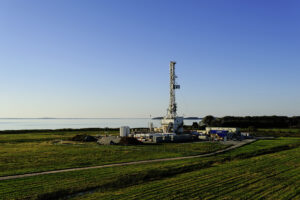
Decarbonizing the rig
With the world continuing its journey toward a net-zero future, every sector in the oil and gas value chain is under pressure to reduce the greenhouse gas emissions from their operations while still meeting global energy demand. For drilling contractors, that means reducing emissions from the rig, which typically means finding less carbon-intensive means of powering the rig.
Diesel engines and generators are still the primary source for producing electricity on a rig, but a host of alternative energy systems are already available on the market. For instance, battery energy storage systems, which store excess energy from natural gas generators and output that energy back into the generators during peak usage, are a popular choice for land drillers. Microgrids, or self-contained electrical networks that can generate and store their own electricity for a local area independent from a local grid, can significantly decrease on-location emissions, particularly when the microgrid is powered by a renewable energy source.
“For powering the rig, you need a proper infrastructure,” said Thomas Kipker, VP of Sales at Kenera. “It’s not only the generation of renewable energy, it’s a generation of energy in general. In various parts of the world, we’re seeing a demand and trend for building grids that can electrify the rig. The rigs can be connected to that grid and run from it – it could be a gas-processing station, a nuclear plant, even a wind farm. This is definitely something where we can see a push for emissions reduction from the rig.”
Kenera – whose parent company KCA Deutag is set to be acquired by Helmerich & Payne following an announcement on 25 July (see Page 47) – already offers a host of systems in this space. For instance, it offers a battery energy storage system consisting of battery power control rooms equipped with battery racks, power and auxiliary panels for use on rigs. Its load bank containers act as a microgrid, enabling its use on rigs working in areas that are not near an electrical grid.
“In order to connect conventional drilling rigs you see nowadays, you need diesel generators, and the diesel generators will electrify the rigs. In order to plug it into the grid, you need some kind of a grid container, or grid transformer container, which transforms the power into a usable power for the rig,” he said.
These types of systems will continue to be an important component of the rig of the future, Mr Kipker added. And among the low-emissions systems available, he believes connecting to a grid offers the best opportunity to completely remove emissions from the rig, as long as the grid is not powered by a fossil fuel.
However, the path for electrification will depend heavily on the region. Western Europe, for instance, offers several public power grids that are running on renewable sources, such as wind energy. In the Middle East, several countries are building nuclear plants that could ultimately provide power to land rigs working in the region.
“One of the biggest problems we’re seeing with electrification is that there is a third player that needs to play in that game beyond the driller and the operator, and that’s the power grid supplier,” he explained. “That’s probably whatever the national power grid company is in the region where you’re operating, and they need to provide you with a suitable amount of power to the rig location.” DC



